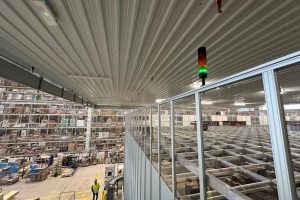What’s the Holy Grail for eCommerce?
Logistics operators that once relied largely on human labour are now testing autonomous forklifts, self-driving carts, and other technology intended to improve efficiency and cut costs by automating repetitive tasks and freeing workers up to handle more complex jobs, WSJ reports.
Focused on improving order accuracy, meeting customers’ needs, and speeding up order fulfillment times means that companies face a litany of challenges when trying to meet these and other goals. In 2020, these challenges have significantly escalated since the pandemic began, and e-commerce sales have skyrocketed. Consequently, during the seasonal peaks such as Black Friday, Christmas, Valentine’s Day, and spring sales, the demand on online shopping intralogistics will be exponentially higher than at any other time of the year. This means companies need advanced strategies to stand out in the modern e-commerce marketplace.
Concurrently, the continuation of Covid-19 and Brexit, may mean higher import/export/freight costs, space concerns and aging facility infrastructures, which will make life difficult for warehouse and logistics managers in the next few years.
As we look ahead to the rest of the year, it’s clear that warehouse and DC managers have their eye on continuous improvement and operational efficiency. In assessing their roadmaps for 2020, 33% of companies say their top e-fulfillment/distribution goals will be to reduce errors in order processing while also improving order accuracy. Once improved, these functions all contribute to speedier and more accurate customer deliveries—the Holy Grail for e-commerce companies.
The Report focuses on e-commerce operations, warehouse pain points, and solutions.
Or contact Kardex at [email protected]




